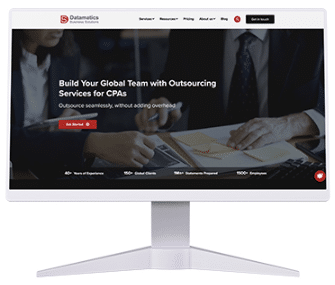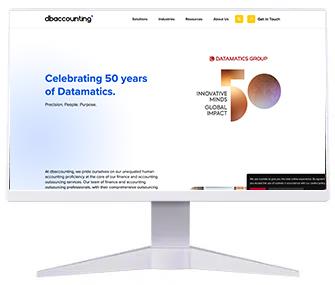Traditional procure-to-pay (P2P) processes are at the centre of every finance and procurement function. Yet, in many organizations, these processes still rely heavily on manual work. That reliance is costly. It limits visibility, slows approvals, and exposes the organization to financial and compliance risks.
Combining automation with outsourcing changes that equation. Together, they lower costs, improve accuracy, and help organizations manage procurement and accounts payable more efficiently.
Key Takeaways
- Traditional P2P (procure-to-pay) operations are burdened by manual, labour-intensive tasks, disconnected workflows, missed supplier discounts/penalties, low visibility, and poor data quality — all of which drive up cost and risk.
- Automation of the P2P workflow delivers measurable benefits: improved data accuracy (≈ 52% improvement cited), faster PO/invoice processing (≈ 57% improvement), better spend visibility and control, lower infrastructure/maintenance cost.
- Outsourcing the P2P process (vendor onboarding, PO processing, invoice validation, payment reconciliation) brings additional advantages: scalability during peaks, global tax/compliance expertise, predictable cost structure.
- Combining automation and outsourcing yields the greatest value: lower cost per invoice, reduced capital expenditure, real-time visibility, improved compliance and supplier relationships.
- Success depends on strong execution and governance: assess current processes, begin with automation where value is clear, choose the right partner (with domain/process maturity and certifications), define measurable KPIs, integrate systems, retain human oversight for exceptions, set clear SLAs and change management.
Cost challenges in traditional P2P methods
Traditional P2P operations face significant cost challenges because manual processes dominate every stage—from requisition and purchase order (PO) creation to invoice processing and payment approval. These inefficiencies directly increase operational and financial costs.
1. Manual and labour-intensive processes increase costs
Traditional systems depend on repetitive, manual tasks such as data entry, invoice matching, and approval routing. As transaction volumes grow, more staff are required to handle the workload, driving up costs. According to IFOL’s 2025 Accounts Payable Automation Trends report, 63% of AP teams now spend over 10 hours a week processing invoices, up from 52% in 2024—clear evidence that inefficiencies are compounding without automation.
2. Inefficient workflows create delays and rework
Disconnected, paper-based workflows lead to bottlenecks across the procurement process. Each delay—from requisitioning to payment—increases the time spent on rework and follow-ups, which reduces productivity and increases cost. Deloitte reports that automation can reduce procurement cycle times by up to 50%, highlighting how process redesign directly impacts efficiency.
3. Missed discounts and payment penalties drive financial loss
Slow approvals and late payments cause organizations to miss supplier discounts and sometimes incur penalties. According to the 2025 IFOL report, 27% of organizations say supplier relationships are being damaged due to delays or issues in the accounts payable process.
4. Lack of visibility weakens financial control
Manual systems offer limited transparency across departments. Finance leaders struggle to track commitments, forecast cash flow, or identify maverick spending. McKinsey notes that fewer than 20% of organizations currently use the procurement data they already have, primarily because it is scattered and unstructured.
5. Poor data quality and strained supplier relationships increase risk
Data entry errors and inconsistent records lead to duplicate payments and compliance risks. Payment delays also weaken supplier trust and make negotiations less favourable over time. The 2023 Deloitte Global CPO Survey found that supplier collaboration has now surpassed digital transformation as the top strategic priority for procurement leaders—a clear sign that operational consistency and timely communication have become essential.
You can also read: Save Hrs By Automating These 10 Finance Workflows
How does P2P automation help with cost savings?
Automating the procure-to-pay process directly enhances cost efficiency, accuracy, and control. It replaces manual activities with digital workflows that shorten cycle times, improve compliance, and reduce transaction costs.
Below are the specific ways automation drives measurable financial impact:
1. Improves data accuracy and reduces manual effort
Automation eliminates repetitive data entry, validation, and matching. According to a report by The Hackett Group, adopters of procurement automation report a 52% improvement in procurement data management automation, reducing manual errors and approval backlogs.
2. Accelerates purchase order and invoice processing
Digital routing and auto-approval workflows shorten cycle times and free up working capital. Hackett’s research also found a 57% improvement in intake management, requisition, and PO processing efficiency among organizations that automate P2P processes.
3. Enhances spend control and visibility
Centralized dashboards and cloud procure to pay solutions provide real-time visibility across spend categories, approvals, and supplier performance. This data-driven transparency helps control costs and prevent rogue or off-contract purchases.
4. Reduces operational and compliance risk
Automation embeds audit trails, approval hierarchies, and policy checks. Intelligent data cleansing and validation reduce payment discrepancies and audit risks, strengthening internal controls and compliance posture.
5. Lowers infrastructure and maintenance costs
Cloud-based automation removes the need for on-premise servers and system maintenance. It integrates with existing ERP systems, ensuring every purchase order, invoice, and payment is captured in one environment.
6. Drives measurable cost savings
The same Hackett Group found that procurement automation and outsourcing deliver a 23% improvement in purchase cost savings and avoidance, while Ardent Partners’ 2024 report shows that 35% of Chief Procurement Officers (CPOs) report higher savings as a direct result of procurement technology.
When effectively implemented, procure-to-pay automation can cut invoice processing costs by up to 70%, shorten cycle times by 40%, and transform manual finance operations into strategic, insight-driven functions.
Where does outsourcing P2P services come in?
Automation streamlines the process, but outsourcing amplifies its value.
Outsourcing P2P services allows organizations to delegate non-core yet resource-heavy functions—vendor onboarding, PO processing, invoice validation, and payment reconciliation—to specialized partners. These providers combine domain expertise, technology readiness, and global delivery capabilities to ensure accuracy and scalability.
Outsourcing enables organizations to scale seamlessly during seasonal peaks, access multi-jurisdictional tax and compliance expertise, and manage costs predictably.
P2P automation + outsourcing: The best of both worlds
The combination of automation and outsourcing delivers results that neither model can achieve alone. Automation increases speed and accuracy; outsourcing reduces resource and infrastructure costs. Together, they create an integrated model that enhances cost efficiency, control, and compliance.
Essentially, the key advantages of P2P automation, when combined with outsourcing, include:
- Lower cost per invoice.
- Reduced capital expenditure
- Real-time visibility
- Improved compliance
Best practices for implementing an integrated P2P automation and outsourcing model
Achieving consistent savings requires a structured and measured approach. Key practices include:
- Assess the current process. Identify high-volume, high-error areas such as invoice entry and PO matching.
- Start with automation, where it adds clear value. Automate repetitive, low-judgement tasks before expanding to complex workflows.
- Choose the right outsourcing partner. Look for providers with domain experience, process maturity, and recognized compliance certifications such as SOC 2 or ISO 27001.
- Define measurable KPIs. Track cost per invoice, accuracy, and cycle time to monitor impact.
- Integrate systems seamlessly. Ensure ERP, procurement, and accounts payable platforms communicate effectively to maintain data accuracy.
- Establish governance. Set up review mechanisms, escalation procedures, and regular performance audits to sustain improvements.
Key factors to take care of with P2P automation and outsourcing
Even the most efficient model can fail without proper oversight. Common risks include over-automation, weak partner control, and data integrity issues. These can be avoided through:
- Balanced human oversight: Use automation for scale but retain expert review for exceptions and judgment-based approvals.
- Clear SLAs and accountability: Define responsibilities, reporting structures, and quality metrics at the outset.
- Strong data security: Ensure all data transfers comply with SOC, GDPR, and ISO standards, using encryption and access controls.
- Phased rollout: Start small, validate outcomes, and expand progressively to minimize disruption.
- Change management: Communicate clearly with internal teams to align them with new workflows and expectations.
Final words
Combining procure-to-pay automation with outsourced P2P services is one of the most effective ways for organizations to achieve sustainable cost savings and stronger control. Automation brings speed and accuracy, while outsourcing adds scalability and expertise. Together, they create a model that lowers costs, enhances compliance, and improves supplier relationships.
Enterprises that act now position themselves for measurable financial and operational advantages—better visibility, lower processing costs, and consistent performance across their procurement process.
FAQs
1. What exactly does “P2P automation” refer to in this context?
It means automating key parts of the procure-to-pay cycle — such as requisition creation, purchase order generation, invoice capture/matching, approval routing, and payment processing — via digital workflows instead of manual paper-based or disconnected systems.
2. Why should an organisation consider outsourcing P2P services rather than doing everything in-house?
Outsourcing allows the business to delegate non-core but high-volume or repetitive tasks (e.g., PO/invoice processing) to a specialist provider that has domain expertise, technology readiness, global delivery and compliance capabilities. This reduces resource/infrastructure cost and enables scaling during peaks.
3. What kind of cost savings or performance improvements can you expect from automation + outsourcing?
The article cites that invoice-processing costs can be cut by up to ~70% and cycle times reduced by about ~40% when effectively executed. Also that procurement automation + outsourcing deliver about a 23% improvement in purchase cost savings/avoidance.
4. What are the main risks or pitfalls when implementing a P2P automation + outsourcing model?
Risks include over-automation (automating tasks that require human judgment), weak partner control or unclear SLAs, data integrity or security issues, lack of governance or change management. To mitigate: retain human oversight for exceptions, define clear roles/SLAs, ensure data security (SOC 2/ISO/GDPR), roll out in phases, communicate changes to internal teams.
5. How should a company get started with this kind of transformation?
The blog recommends: assess your current P2P process and identify high-volume / high-error areas; start automation with repetitive, low-judgment tasks; choose the right outsourcing partner with domain expertise; define measurable KPIs (cost per invoice, accuracy, cycle time); ensure systems integration (ERP / procurement / AP); establish governance and change-management mechanisms.

Ashish Gupta


